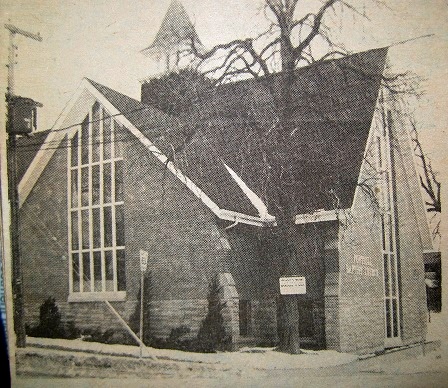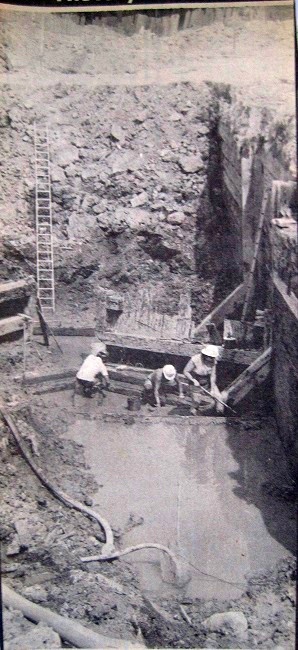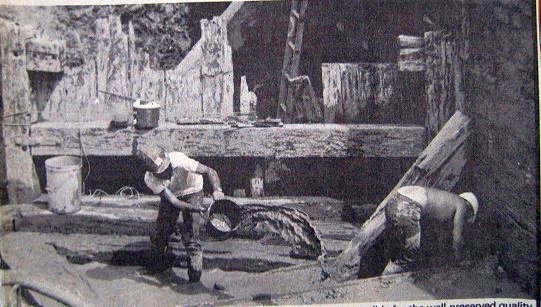DEEPENING AND WIDENING OF INFLUENCE SOUGHT BY CHURCH
By REV. RON HARMER
PUBLICITY CONVENOR
FONTHILL BAPTIST CHURCH
[Welland Tribune, 17 February 1987]
PELHAM-The 140th annual meeting of Fonthill Baptist Church was held recently with Neville Borisenko, chairman of the Deacons’ board, presiding and thus closing out of his three-year year of responsibility.

The meeting began with a delicious pot-luck supper in the church hall, followed at 7 p.m. by the business meeting held in the church sanctuary.
For the year 1986, a new procedure was followed. The Nominating committee began its work in October, seeking to choose carefully and prayerfully the new officers for 1987 over several weeks.
When this work was completed, the new people maned were elected at the Nov. 26 church business meeting. The purpose was to allow them to begin their stewardship as of Jan. 1, 1987.
At this meeting, the church budget for 1987 was presented. The newly-appointed officers for the new year were then able to sit in at the last Deacons’ board meeting in the year, held in December. In this way they could get acquainted with their new roles and provide a smooth tradition into 1987.
Pastor Rob Duncan has now just finished his first full year as pastor. The year has been busy and he has focused on preaching, teaching, visitation and counselling. Two retreats (in April and October) were held with the Deacons’ board. A wise emphasis was placed on ‘Renewal’ and renewal cottage meetings were held throughout the summer months.
Bible study and prayer have been central in our church life. Many local needs were evidenced among our people, and concentration was on these things. Our pastor carried a heavy load locally in the Association, and convention-wise, and needs our prayers.
In the annual meeting on Jan. 25, our purpose was not to centre on written reports so much, but to think of specific happening in some visual presentation. The nursery school presented a small choir and sang beautifully.
Jim Overholt, chairman of the nursery school board, presided. He introduced Elizabeth High, one of the nursery school teachers. She gave winsome words of witness, telling how she came to be involved with our school. It was an excellent presentation.
One of the mothers involved with the school is Karen Poynton. She has started a mothers’ auxiliary to provide moral support, especially for these little ones. Joyce Gunter is the school superintendent and Carolyn Lammers is the other teacher serving along with High. The choir presented a humorous skit, and Janet Robinson Mission Circle yielded insight into the ways our women are helping locally and overseas.
Our church has a very active prayer fellowship. Prayer requests circulate constantly. Many answers to our prayers have come. At least 44 people are involved at the moment as prayer partners.
Bob Rittenhouse has just resigned as Sunday school superintendent after serving most capably for four years, He is succeeded now by Al Topolinsky, who, in 1986 served as chairman of the Christian Education division. We can not overestimate the value of the Sunday School which is the right arm of the church.
Missions both at home and abroad are our concern and our church is a vital part of overseas missions through our Canada-Wide Overseas Mission Board. We share with missionaries as prayer partners, as well as with our gifts.
In 1986 our church budget stood at $94,325, and of that, $25,605 was given to missions at home and overseas. Now in 1987, our church budget stands at $101,050 and the budget at $28,050.
During the early part of the meeting a “fitting-in-memoriam” service was held to remember those who in 1986 moved on into higher service. The presiding chairman, Mr. Borisenko at the end of this helpful meeting, took the chairman’s gavel and turned it over to Malcolm Gibbon, who had been elected in his place for the next three years.
The church’s prayer is that a deepening and widening influence may continue through true Christian worship and outreach under Mr. Gibbon’s leadership.
 Subscribe..
Subscribe..
 Workers complete the excavation of Lock 24 on the first Welland Canal in St. Catharines, constructed in the 1820s and discontinued in the 1840s when the second canal was built.
Workers complete the excavation of Lock 24 on the first Welland Canal in St. Catharines, constructed in the 1820s and discontinued in the 1840s when the second canal was built.
